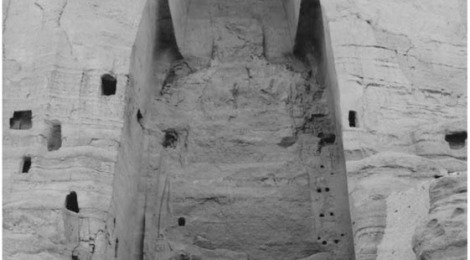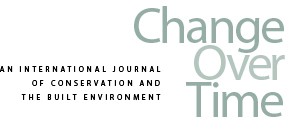
Bamiyan, Vandalism, and the Sublime | James Janowski
The shock caused by the image of such destruction can easily inhibit thought on the event.1
—Jean François-Clément
I. Introduction
In March 2001, on the heels of some serious back-and-forth posturing and plenty of high-stakes bluster, the Taliban, ignoring the pleas and remonstrations of various international institutions and cultural heritage authorities, made good on a February 26 announcement that it would blow up Bamiyan’s Buddhas. By mid-March, after a painstaking two-week effort involving artillery shells, rocket launchers, and—it turns out the stone was especially hardy and the Buddhas did not go quietly into the night—both dynamite and the technical know-how of Pakistani and Saudi demolition experts, this pair of monumental sculptures, having stood tall and proud for nearly fifteen hundred years as telling material representations of the confluence of cultures that made Bamiyan a lively and cosmopolitan center on the Silk Road, had been reduced to rubble. Almost without exception, people the world over reacted with shock and horror. Arguably the most significant pieces of Afghanistan’s material heritage—the taller of the two was the largest standing Buddha likeness in the world—the colossi had withstood annual freeze-thaw cycles, any number of earthquakes, and even the occasional act of willful abuse. They did not withstand the Taliban.
The case by now is infamous. It has been discussed in many different venues—in the popular press to be sure but also in both cultural heritage and academic circles—and has been thoughtfully explored by scholars in a variety of disciplines.2 And this is no surprise. Bamiyan is a fascinating and important—if also a deeply unfortunate and hugely sad—case study in the deliberate targeting of material cultural heritage. While reflecting on Bamiyan gives rise to innumerable issues and questions, I focus on a small subset of these here and have two related aims. First, I will make an effort to understand (and this, by the way, will be challenging) what happened in March 2001—that is, put differently, I’ll attempt to sort out how we might best conceive and describe the Taliban’s decision and actions, working to find the right concepts and language for, and hence the right understanding of, the same. Second, I will think some about how to interpret what is currently on the ground at Bamiyan (BAI)—about how to read the result, that is to say, of the Taliban’s actions.3Put in the form of questions, then, I ask: were the Taliban vandals—and was this, indeed, an instance of vandalism? As we’ll see, this is a difficult question. But whatever the answer is—something I begin to discuss in the next section and strive to make progress with by the end of the essay—the Taliban’s behavior at Bamiyan certainly shares many of vandalism’s salient features. And it turns out that concentrating on one of these—deliberately induced change, a constant across all cases of vandalism and close cousin phenomena alike—gives rise to a second (and perhaps in one sense even more important) question: what does BAI mean?4 How are we to understand the site in its post-Taliban state? What do the empty niches and fragmented remains signify or symbolize or represent? Responding to this second question—and zeroing in on one meaning in particular—will be my focus in section III. After raising and deflecting an objection to my argument in section IV, I work to draw some provisional conclusions in section V.
Read the full article at Project MUSE



